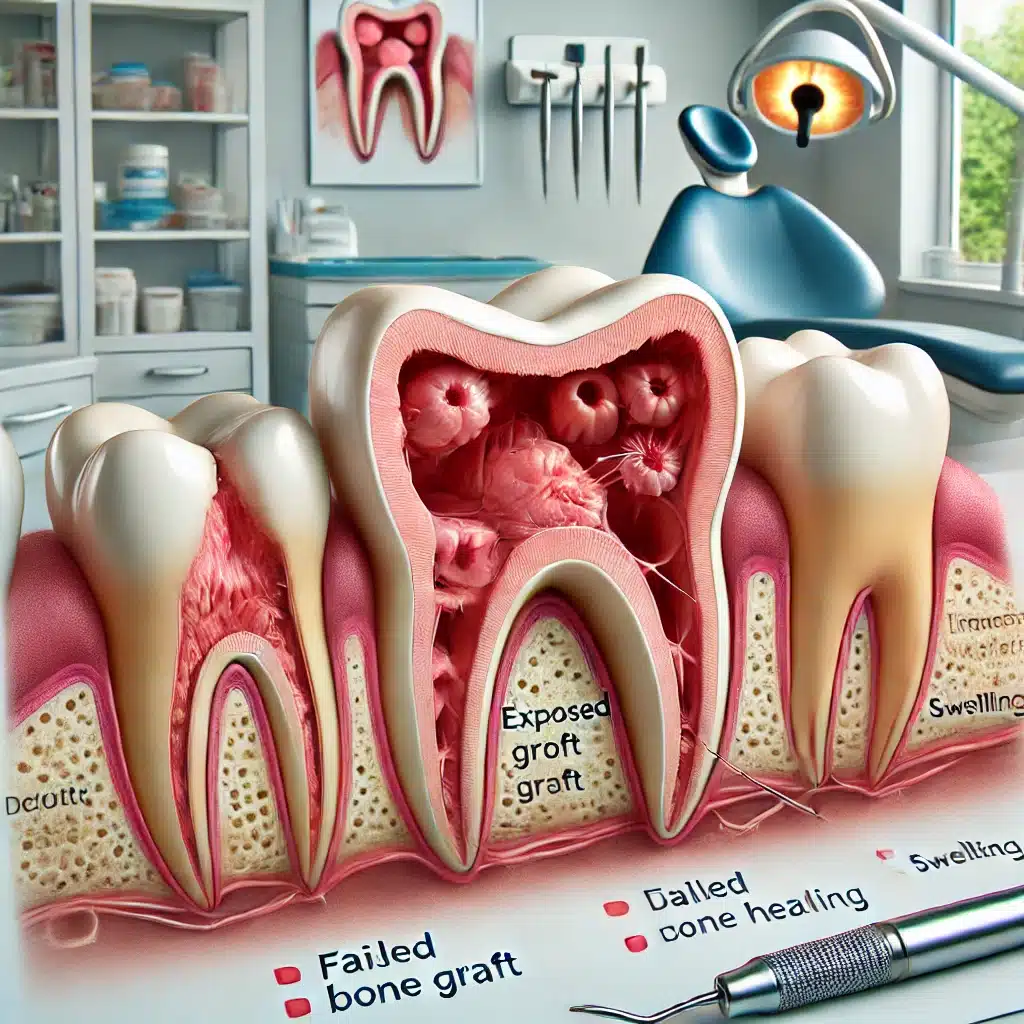Understanding Failed Dental Bone Graft Healing
Dental bone grafts are a common procedure used to rebuild and strengthen bone structures in the jaw, especially for patients who require dental implants. While these procedures are generally successful, complications can occur, leading to failed healing. Failed dental bone graft healing pictures often highlight critical issues that arise, such as poor integration, infection, or inadequate bone growth.
What is a Dental Bone Graft?
A dental bone graft involves transplanting bone tissue or a synthetic substitute into areas of the jawbone that lack sufficient density or volume. This procedure helps create a solid foundation for dental implants or improves the overall health of the jawbone. The graft material can be derived from the patient (autograft), a donor (allograft), or synthetic materials (alloplast).
Despite advancements in dental technology, some patients experience complications during the healing process, which may result in the failure of the bone graft.
Common Causes of Failed Dental Bone Graft Healing
1. Infection
One of the most common causes of graft failure is infection. Infected grafts may lead to swelling, pain, and the formation of pus. Pictures of failed dental bone grafts often reveal inflamed tissues and exposed graft material.
How Infections Occur:
- Poor oral hygiene after the procedure
- Contaminated graft material
- Improper sterilization of surgical tools
2. Inadequate Blood Supply
Bone grafts rely on a healthy blood supply to heal and integrate into the surrounding bone. A lack of proper blood flow can result in tissue necrosis and graft rejection. Failed graft healing images may show discolored or dying tissue, indicating insufficient vascularization.
3. Smoking and Lifestyle Factors
Smoking is a significant risk factor that impairs healing due to reduced blood flow and oxygen supply. Similarly, poor nutrition and systemic conditions such as diabetes can delay or prevent successful healing. Visual evidence of failed grafts may highlight poor tissue regeneration in patients with these habits.
4. Mechanical Stress
Excessive stress on the graft site, often due to improper post-operative care or premature loading of dental implants, can cause the graft to fail. Failed healing is frequently visible in pictures as displaced graft material or fractured bone.
5. Allergic Reactions or Rejection
In rare cases, patients may experience an allergic reaction or rejection of synthetic or donor graft materials. Failed graft photos in such cases often show signs of inflammation, redness, and swelling.
Identifying Signs of a Failed Dental Bone Graft
Visual Indicators in Pictures:
- Exposed graft material: This can happen when the gum tissue does not fully cover the graft.
- Redness and swelling: Persistent inflammation is a sign of complications.
- Pus formation: Indicates infection and may appear as white or yellow discharge.
- Bone loss: Radiographs may reveal areas where the graft failed to integrate.
Physical Symptoms:
- Chronic pain or discomfort at the graft site
- Loose dental implants due to insufficient bone support
- Persistent bad breath or an unpleasant taste caused by infection
What Can Be Learned from Failed Dental Bone Graft Healing Pictures
1. Importance of Early Detection
Failed graft healing pictures serve as a visual reminder of the importance of routine follow-ups and early detection. Dentists can use these images to identify issues such as infection or improper healing before they worsen.
2. Insights into Common Complications
By analyzing images of failed grafts, dental professionals can better understand the common complications and take preventive measures in future procedures.
3. Patient Education
Pictures of failed healing can be valuable tools for educating patients about the risks involved in the procedure and the importance of following post-operative care instructions diligently.
Preventing Dental Bone Graft Failure
Pre-Procedure Measures
- Comprehensive Evaluation: A thorough evaluation of the patient’s oral health, medical history, and lifestyle factors is crucial.
- Choose the Right Material: The selection of graft material should align with the patient’s needs and compatibility.
Post-Procedure Care
- Maintain Oral Hygiene: Proper brushing, flossing, and the use of antiseptic rinses can minimize the risk of infection.
- Avoid Smoking: Quitting smoking significantly improves healing outcomes.
- Follow Dietary Guidelines: A nutrient-rich diet supports tissue regeneration.
Regular Check-Ups
Routine dental visits allow the dentist to monitor the healing process and address any early signs of complications.
Treatment Options for Failed Dental Bone Grafts
Addressing Infection
If infection is present, it may be necessary to:
- Prescribe antibiotics
- Perform surgical debridement to remove infected tissue
Re-Grafting
In some cases, a second grafting procedure may be required to achieve the desired outcome. Re-grafting is often accompanied by more rigorous pre- and post-operative care.
Alternative Treatments
For patients who cannot undergo a second bone graft, alternative solutions like zygomatic implants or mini dental implants may be considered.
Conclusion
Failed dental bone graft healing pictures highlight the challenges and complications that can arise during the recovery process. Understanding the common causes, recognizing early signs, and taking preventive measures can significantly improve outcomes. Patients are encouraged to maintain open communication with their dental care providers and adhere to all post-operative instructions to ensure the success of their bone graft procedure.




